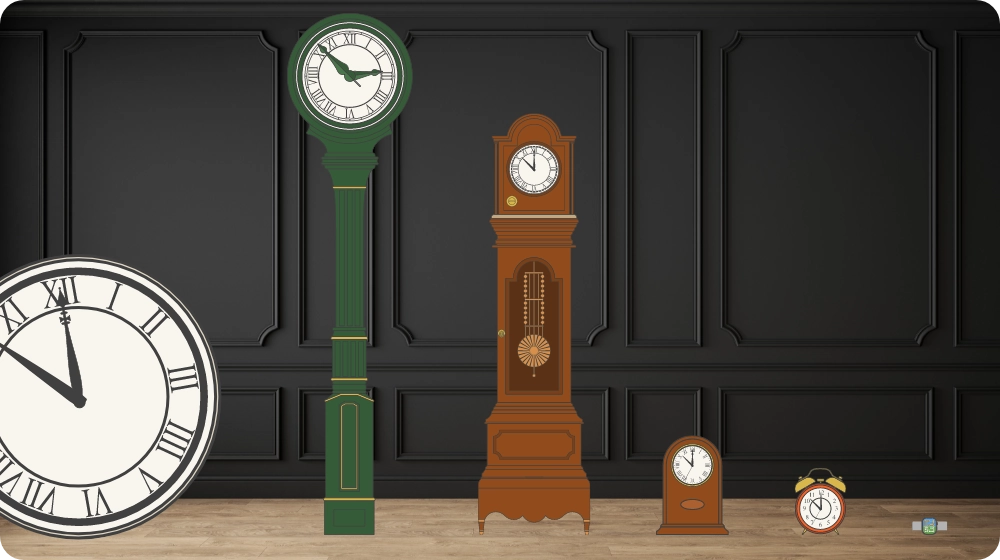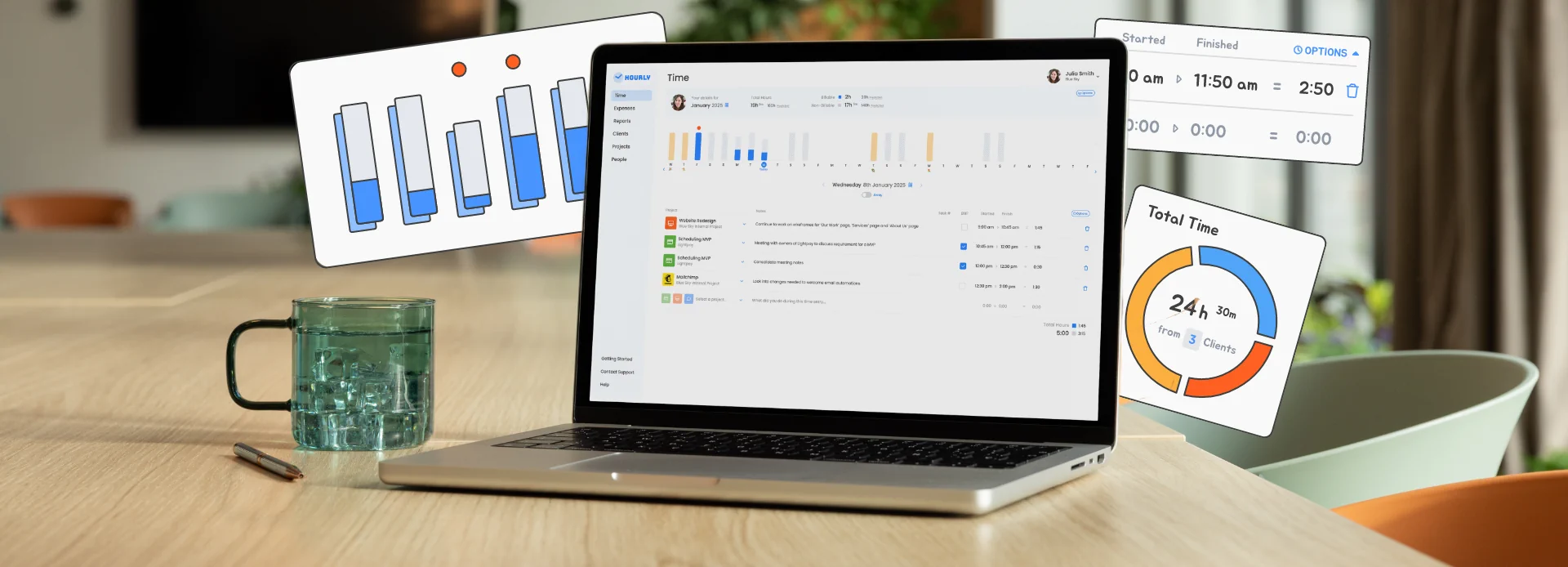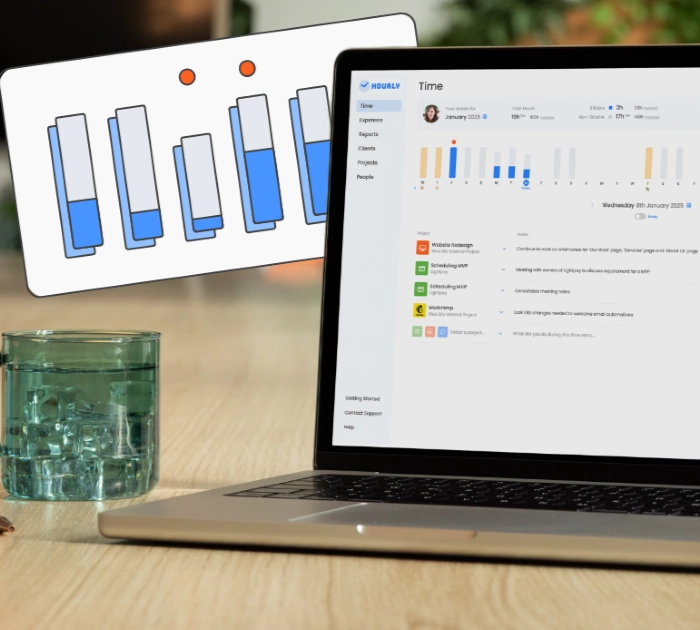Fun Clock Facts
11 Fun Facts About Clocks
Clocks are everywhere. From the small clock you keep on your bedside table to the enormous clock tower that dominates a city skyline, to the time tracking software on your PC (Hourly, perhaps…), these devices not only measure time but also symbolize human attempts to understand, regulate, and live by the passage of hours. Throughout history, clocks have taken many forms—from candle clocks and water clocks to the atomic clock and modern quartz clock. Below are 11 fun facts about clocks that blend history, science, culture, and technology.

1. Clocks are among the oldest time measuring instruments
One of the most fascinating clock facts is that humans have been finding ways to measure time for thousands of years. Before mechanical clock innovations, early civilizations used natural units like the sun’s position in the sky to measure duration. Simple horizontal sundial devices demonstrated the apparent movement and apparent position of the sun, letting people track elapsed time through visible indicators like a pointer fixed on a flat surface.
Water clocks—often cited as some of the oldest time measuring instruments —employed controlling valves to regulate water flow, demonstrating how many devices relied on physical processes to measure time. Candle clocks, sandglass or sand timer designs, and even such duration timers as oil lamps all helped societies measure duration before the rise of accurate clocks. These tools, though crude, were the precursors to modern timekeeping component systems we now take for granted.
2. The pendulum clock changed accuracy forever
The invention of the pendulum clock by Christiaan Huygens in 1656 was revolutionary. Before that, most mechanical clock models could only keep time within about 15 minutes of accuracy each day. With a pendulum’s steady swing, time accuracy improved dramatically—down to seconds per day.
Pendulum clocks also paved the way for specialized tall clock designs like the grandfather clock, sometimes called a longcase or even a tall clock. These devices not only demonstrated skilled craftsmanship in their ornate cases but also offered more accurate clocks than previous generations of timepieces.
3. Alarm clocks have a surprisingly ancient history
Most of us know alarm clocks for their loud alert signal that helps wake us up, but did you know the concept dates back to ancient Greece? Philosopher Plato is said to have had a water clock with a whistle that produced a loud alert signal at dawn, functioning as an early alarm.
By the 19th century, mass produced items like wind-up alarm clocks became common in homes. Today, alarm clocks may be analog clocks, digital clocks, or even built into mobile phones. Some other clocks serve multiple purposes, like including such duration timers for cooking alongside an alarm.
4. Clock towers helped standardize time
Before watches and personal clocks became affordable, people relied on public clocks to keep on schedule. The clock tower became a civic centerpiece, offering visible indicators of the hour for entire communities. Perhaps the most famous is Big Ben (technically the Great Bell) at the Palace of Westminster in London.
Clock towers also played an important role in the railroad industry. With trains needing precise scheduling, standardized time zones were introduced in the 19th century. The railway station clock tower became a critical timing signal for both passengers and conductors, ensuring synchronized departures.
5. Quartz revolutionized timekeeping
The 20th century saw another leap: quartz timekeeping. A modern quartz clock works by making quartz clock crystals vibrate at a precise frequency when exposed to electric power. This vibration acts as a quartz crystal resonator, providing an incredibly stable timekeeping component.
Unlike analog clocks with purely mechanical parts, digital clocks and quartz watches became affordable mass produced items by the mid 20th century. This meant many devices—desktop time clocks, new digital clocks for schools, and even small clock designs—could achieve accuracy within a few seconds per month.
Quartz timekeeping allowed manufacturers to create linear clock styles, mechanical digital display clocks, and training clocks for classrooms, making time education more accessible.
6. The atomic clock is the gold standard of precision
While quartz was impressive, the atomic clock is the most accurate clock-type ever built. First developed in 1949 and improved through subsequent decades, these devices rely on several physical processes at the atomic level. Instead of measuring time through physical objects’ apparent movement, atomic clocks measure duration based on microwave signals emitted by electrons in atoms like cesium.
According to the National Institute of Standards and Technology (NIST), these are the most accurate clocks known, with some models deviating less than one second over millions of years. NIST provides the timing signal that coordinates GPS, international communications, and even daylight saving time adjustments.
7. Grandfather clocks tell more than time
A grandfather clock—also known as a tall clock—isn’t just a pendulum-driven machine. It also symbolizes tradition and artistry. These clocks demonstrate skilled craftsmanship with elaborate woodwork, often featuring a clock face decorated with astronomical motifs like the sun’s position or moon phases.
Popularized in the 18th century, the grandfather clock became a symbol of prestige. In addition to measuring time, they measure duration with such duration timers as chimes marking the quarter hours, including the third quarter of each hour.
8. Pocket watches and the rise of portable time
Before wristwatches became common, the pocket watch reigned supreme from the 16th century onward. These small clock devices were carried by nobles and railroad conductors alike. The pocket watch was crucial to the railroad industry, where time accuracy was essential to avoid collisions.
Railroad pocket watches were often certified for their precision, ensuring trains ran safely and on time. Pocket watches were a vital part of the transition from public clocks to personal timekeeping.
9. Time zones, daylight saving time, and global synchrony
Time zones may feel obvious today, but they’re relatively recent. In the 19th century, many clocks in towns were set by the sun’s position, leading to significant variation. As the railroad industry expanded, this chaos became untenable. The introduction of standardized time zones in 1884 created global consistency.
Daylight saving time, adopted in various forms during the 20th century, adjusts the hour hand moves forward by one hour each spring. While controversial, it shows how human society shapes clocks to fit social needs.
10. Clocks as tools for learning and work
Clocks aren’t just for keeping track of elapsed time. In classrooms, teachers use training clocks to show children how to measure time. With visible indicators like a bright clock face and a pointer fixed to a flat surface, these tools help kids understand how the hour hand moves forward.
In workplaces, time clocks have long been used to measure time for wages. Early time clocks recorded the elapsed time of workers’ shifts, while modern digital clocks and computer displays have automated this process.
11. From sundials to mobile phones—clocks keep evolving
The journey of clocks reflects human ingenuity. Starting with candle clocks and water clocks, moving through the mechanical clock, synchronous electric clock designs, and the synchronous clock models of the early 20th century, we have reached an era where mobile phones carry some of the most accurate clocks available to the public.
Unlike analog clocks, new digital clocks on mobile phones automatically sync with the atomic clock through a timing signal from satellites. This ensures time accuracy even at sea level or when traveling across time zones.
Today, many devices—from railway station clocks to computer displays—rely on accurate clocks driven by electric power. And yet, the simple horizontal sundial still connects us to the sun’s position, reminding us that all our elaborate devices operating on several physical processes are ultimately anchored in nature.
Clocks are more than just tools to measure time—they reflect culture, science, craftsmanship, and the way human societies organize themselves. From sandglass or sand timer instruments to the atomic clock, each development represents a step in humanity’s quest for time accuracy.
Clock facts like the invention of the pendulum clock, the rise of the grandfather clock, or the precision of the most accurate clocks remind us that these devices are both practical and symbolic. Whether through public clocks in a clock tower, pocket watch traditions in the railroad industry, or the digital clocks in mobile phones, clocks remain central to how we live, work, and even rest.















